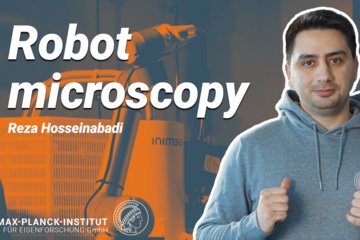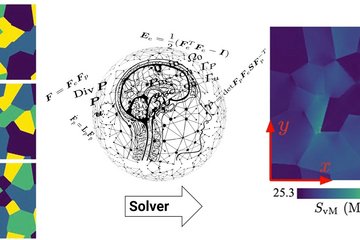Ab initio thermodynamics
The prediction of materials properties with ab initio based methods is a highly successful strategy in materials science. While the working horse density functional theory (DFT) was originally designed to describe the performance of materials in the ground state, the extension of these methods to finite temperatures has seen remarkable breakthroughs. This is needed, since many functional and structural mechanisms as well as the stability of relevant phases dramatically change with temperature.
Since the foundation of the CM department in 2005, the MPIE has been a major driving force for these developments. It is systematically developing and exploring novel ab initio strategies to compute the vibrational, magnetic, electronic and configurational entropy contributions to Gibbs free energies, as well as their non-adiabatic coupling phenomena. These activities received a lot of attention in the scientific community and belong to the most-cited papers at the MPIE. Some major strategies in ab initio thermodynamics that have been substantially advanced in the last years are:
- Complex approaches to lattice vibrations well beyond the harmonic limit such as thermodynamic integration using Langevin dynamics (TU-TILD and TOR-TILD) have been systematically used for the determination of the melting temperature of metals. Based on high-throughput studies, a simulation protocol was developed that yields an uncertainty of the melting point below 5 K [1]. In order to achieve a high numerical efficiency, interatomic potentials had to be employed within these methods. The application of moment-tensor potentials (MTP) has made it recently possible, to describe the large configurational space of multicomponent alloys with high predictive power.
- Magnetic fluctuations at elevated temperatures and the resulting disorder above the ordering temperature are treated within the spin-space averaging (SSA) approach. Since this requires a large number of well-defined spin configurations, an accurate and efficient method for the spin-constrained DFT calculations was developed in the CM department [2]. The power of the approach was demonstrated for the atomic forces determining vacancy formations and diffusion in Fe-based alloys (Fig. 1).

These methodological breakthroughs became only possible due to the large advances in our in-house-developed platform pyiron, which provided the basis for rapid implementation and testing of the underlying complex simulation workflows. Thanks to these developments, it became possible to easily integrate distinctly different computer codes and handle huge numbers of separate calculations on heterogeneous computer architectures thus allowing rapid prototyping of complex and highly advanced simulation protocols. This provided also the basis to extend the ab initio thermodynamics in the CM department from the description of bulk phases to an analysis of the temperature and composition dependent stability of defects. Applications to stacking faults and grain boundaries have revealed unexpected trends and new interpretations of experiments. The investigations gave rise to the concept of defect phase diagrams, which is now the fundamental basis of the collaborative research center 1394.












